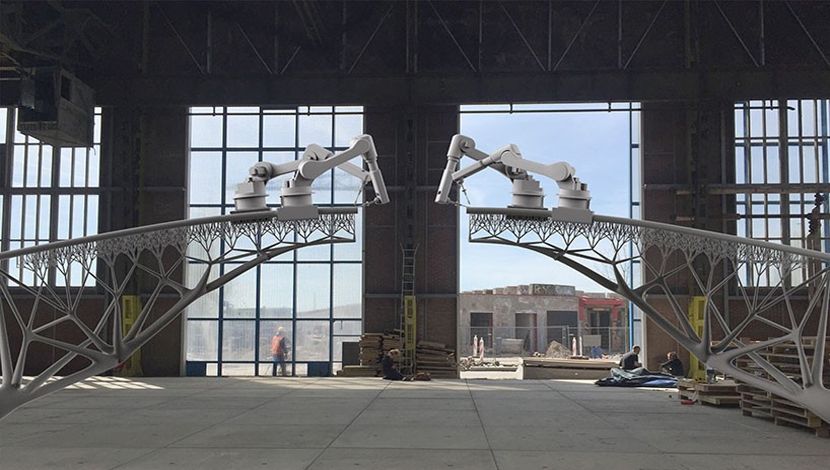

A new bridge that was completely 3D printed has just opened in the Netherlands. Designed and built by engineers from the Technical University of Eindhoven and construction company BAM Infra, the cyclist bridge was printed in pieces from a concrete mix, reinforced with steel cable, before being assembled and erected on site.
Although the team is keen to call the project the world’s first 3D-printed bridge, that’s not really the case without adding a few caveats. A firm called MX3D was planning to have a pair of robot arms print a bridge out of steel, although the project seems to have stalled. However, a pedestrian bridge in Madrid was constructed early this year, which seems to claim the rightful title of first 3D printed bridge.
That said, the new Dutch design looks more like a practical bridge and less like an unfinished movie prop. It was made at Eindhoven, using a huge purpose-built cement printer. Liquified mortar is sent through a printhead to print individual layers 1 cm thick, and before each layer dries steel wire is fed down through the head for reinforcement. Layer by layer, the printer builds up a section that stands about 1 m tall.
Six of these pieces were printed and carted to the construction site, where they were then glued together and hoisted into place. The final bridge stretches 8 m long, 3.5 m wide and is 0.9 m thick, and according to the team, it was able to support 5 tons in tests – far more weight than the cyclists it’s designed for. It’s expected to last for at least 30 years.
There are a few advantages to 3D printing structures like this. Cement can be deposited only where it’s needed, reducing the amount of cement required and in turn lowering CO2 emissions during production. Since no formwork structures need to be built to support the wet cement, waste materials are also reduced, as well as the time and cost involved. The researchers estimate that their process should be three times faster than conventional construction with concrete, and more unusual shapes can be built.
The bridge was built as part of the Noord-Om project, which is aiming to use innovative techniques like 3D printing to construct a new section of road near the village of Gemert. The Eindhoven researchers are also currently working on printing five houses, which will eventually be lived in.

